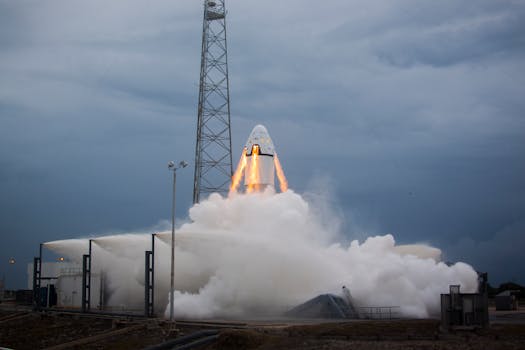Satellite Launch Missions and Their Impact on Space Exploration
Satellite launch missions have revolutionized space exploration, enabling humans to study the universe, communicate globally, and navigate with precision. This article delves into the impact of satellite launch missions on space exploration, highlighting notable missions, technological advancements, and the future of space travel.

Satellite Launch Missions and Their Impact on Space Exploration
Satellite launch missions have been a crucial component of space exploration, enabling humans to study the universe, communicate globally, and navigate with precision. The focus keyword Satellite launch has become synonymous with space exploration, as these missions have paved the way for groundbreaking discoveries and technological advancements. In this article, we will explore the impact of satellite launch missions on space exploration, highlighting notable missions, technological advancements, and the future of space travel.
Introduction to Satellite Launch Missions
The first satellite launch mission, Sputnik 1, was launched by the Soviet Union in 1957, marking the beginning of the space age. Since then, numerous satellite launch missions have been conducted by space agencies and private companies around the world. These missions have been instrumental in expanding our understanding of the universe, from the discovery of dark matter and dark energy to the exploration of distant planets and galaxies. The Satellite launch missions have also enabled the development of critical technologies, such as GPS, telecommunications, and weather forecasting.
Notable Satellite Launch Missions
One of the most notable satellite launch missions is the Hubble Space Telescope, launched by NASA in 1990. The Hubble Space Telescope has revolutionized our understanding of the universe, capturing stunning images of distant galaxies, stars, and planets. Another significant mission is the International Space Station, launched in 1998, which has enabled scientists to conduct research in microgravity and has paved the way for long-duration spaceflight. Private companies, such as SpaceX and Blue Origin, have also made significant contributions to satellite launch missions, with reusable rockets and cost-effective launch systems.
Technological Advancements and Future of Space Travel
The technological advancements driven by satellite launch missions have been phenomenal, with significant improvements in materials, propulsion systems, and computing power. The development of reusable rockets, such as SpaceX’s Falcon 9, has reduced the cost of access to space, making it more affordable for governments and private companies to launch satellites and spacecraft. The future of space travel looks promising, with plans for manned missions to Mars, the Moon, and beyond. The Satellite launch missions will continue to play a vital role in these endeavors, enabling the establishment of permanent human settlements and the exploration of the solar system.
Conclusion
In conclusion, satellite launch missions have had a profound impact on space exploration, enabling humans to study the universe, communicate globally, and navigate with precision. The Satellite launch missions have driven technological advancements, expanded our understanding of the universe, and paved the way for the future of space travel. As we continue to push the boundaries of space exploration, the importance of satellite launch missions will only continue to grow, inspiring new generations of scientists, engineers, and astronauts to explore the vast expanse of space.

